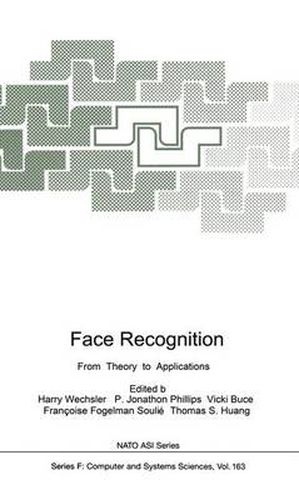Readings Newsletter
Become a Readings Member to make your shopping experience even easier.
Sign in or sign up for free!
You’re not far away from qualifying for FREE standard shipping within Australia
You’ve qualified for FREE standard shipping within Australia
The cart is loading…






This title is printed to order. This book may have been self-published. If so, we cannot guarantee the quality of the content. In the main most books will have gone through the editing process however some may not. We therefore suggest that you be aware of this before ordering this book. If in doubt check either the author or publisher’s details as we are unable to accept any returns unless they are faulty. Please contact us if you have any questions.
The NATO Advanced Study Institute (ASI) on Face Recognition: From Theory to Applications took place in Stirling, Scotland, UK, from June 23 through July 4, 1997. The meeting brought together 95 participants (including 18 invited lecturers) from 22 countries. The lecturers are leading researchers from academia, govemment, and industry from allover the world. The lecturers presented an encompassing view of face recognition, and identified trends for future developments and the means for implementing robust face recognition systems. The scientific programme consisted of invited lectures, three panels, and (oral and poster) presentations from students attending the AS!. As a result of lively interactions between the participants, the following topics emerged as major themes of the meeting: (i) human processing of face recognition and its relevance to forensic systems, (ii) face coding, (iii) connectionist methods and support vector machines (SVM), (iv) hybrid methods for face recognition, and (v) predictive learning and performance evaluation. The goals of the panels were to provide links among the lectures and to emphasis the themes of the meeting. The topics of the panels were: (i) How the human visual system processes faces, (ii) Issues in applying face recognition: data bases, evaluation and systems, and (iii) Classification issues involved in face recognition. The presentations made by students gave them an opportunity to receive feedback from the invited lecturers and suggestions for future work.
$9.00 standard shipping within Australia
FREE standard shipping within Australia for orders over $100.00
Express & International shipping calculated at checkout
This title is printed to order. This book may have been self-published. If so, we cannot guarantee the quality of the content. In the main most books will have gone through the editing process however some may not. We therefore suggest that you be aware of this before ordering this book. If in doubt check either the author or publisher’s details as we are unable to accept any returns unless they are faulty. Please contact us if you have any questions.
The NATO Advanced Study Institute (ASI) on Face Recognition: From Theory to Applications took place in Stirling, Scotland, UK, from June 23 through July 4, 1997. The meeting brought together 95 participants (including 18 invited lecturers) from 22 countries. The lecturers are leading researchers from academia, govemment, and industry from allover the world. The lecturers presented an encompassing view of face recognition, and identified trends for future developments and the means for implementing robust face recognition systems. The scientific programme consisted of invited lectures, three panels, and (oral and poster) presentations from students attending the AS!. As a result of lively interactions between the participants, the following topics emerged as major themes of the meeting: (i) human processing of face recognition and its relevance to forensic systems, (ii) face coding, (iii) connectionist methods and support vector machines (SVM), (iv) hybrid methods for face recognition, and (v) predictive learning and performance evaluation. The goals of the panels were to provide links among the lectures and to emphasis the themes of the meeting. The topics of the panels were: (i) How the human visual system processes faces, (ii) Issues in applying face recognition: data bases, evaluation and systems, and (iii) Classification issues involved in face recognition. The presentations made by students gave them an opportunity to receive feedback from the invited lecturers and suggestions for future work.